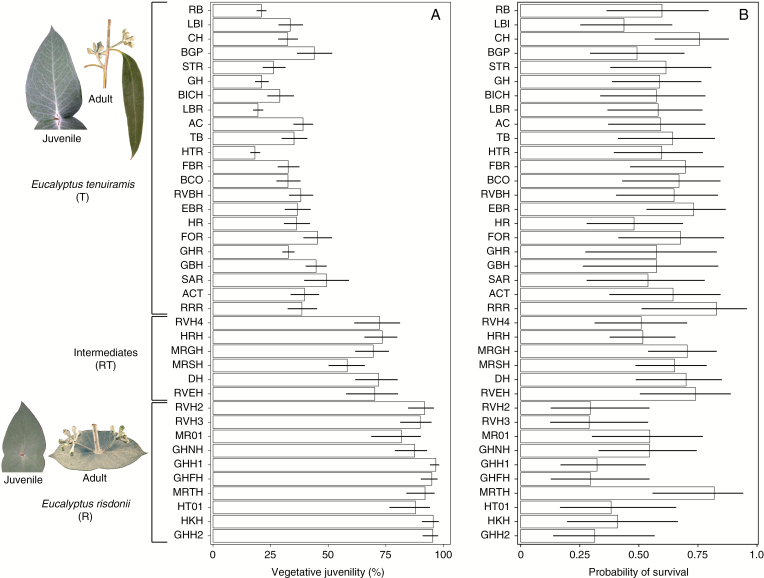Fig. 1.
Provenance values for mean effects and associated 95 % confidence intervals for the examined common-garden trial site: (A) vegetative juvenility (i.e. percentage of juvenile foliage retained at age 5 years); and (B) adult survival (i.e. probability of survival at age 20 years). The 38 provenances of the three ontogenetic classes E. tenuiramis (T), E. risdonii (R), and their intermediates (RT) are shown. Provenances have been grouped by ontogenetic class, and then ranked within an ontogenetic class according to the percentage of juvenile foliage previously observed in the wild (Wiltshire et al., 1991, 1998). Ideograms represent the extremes of the phenotypic cline from the heteroblastic E. tenuiramis to the homoblastic E. risdonii ontogenetic classes. The opposite, connate ‘juvenile’ leaf form is retained into reproductive maturity in E. risdonii (bottom), whereas E. tenuiramis is only reproductively mature when bearing the opposite, petiolate ‘adult’ leaf form.

